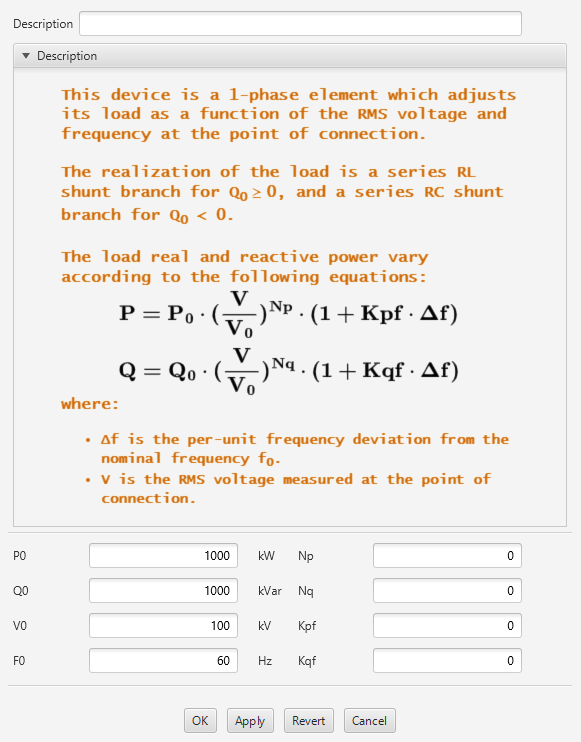Load Model
The PQ load consists of the series combination of equivalent R, L and C branches and the series combination of equivalent R and L branches. The following rules are applied:
- If P=0 and Q=0, the element becomes disconnected in all solution methods.
- The RL series inductance equivalent is calculated using:
| Mathblock |
|---|
|
L(Q>0) = {V_{base}^2 \cdot Q \over \omega \cdot (P^2 + Q^2)} |
- The resistance value in the RL series combination is given by:
| Mathblock |
|---|
|
R = {V_{base}^2 \cdot P \over (P^2 + Q^2)} |
- When Q<0, the capacitance value becomes:
| Mathblock |
|---|
|
C(Q<0) = \frac{P^2 + Q^2}{V_{base}^2 \cdot Q \cdot \omega } |
Model Equations
The model equations of this load are given by:
| Mathblock |
|---|
|
P=P_0\cdot\left(\frac{V}{V_0}\right)^{Np}\cdot(1+Kpf\cdot \Delta f)
|
| Mathblock |
|---|
|
Q=Q_0\cdot\left(\frac{V}{V_0}\right)^{Nq}\cdot(1+Kqf\cdot \Delta f) |
where:
: Active power under nominal conditions
: Reactive power under nominal conditions
: Nominal voltage
: Frequency deviation from the nominal value F0 in pu.
: Active power-Frequency coefficient
: Reactive power-Frequency coefficient
: Active power-Voltage coefficient
: Reactive power-Voltage coefficient
: RMS voltage measured at the connection node Net_T1
By adjusting Np and Nq equal to 0, 1, or 2, the load can be set to work as a constant power, constant current, or constant impedance, respectively.

